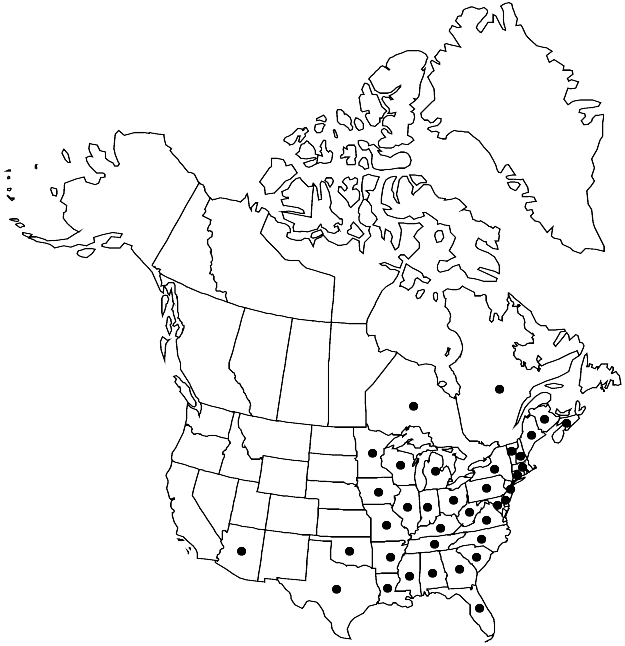Anomodon tristis
in W. S. Sullivant, Musc. Hepat. U.S., 241. 1856.
Plants small, filiform to wiry, dark brownish green. Stems 0.5–1.5 cm, 0.3–0.5 mm thick when dry, rarely branched, primary branches prostrate; central strand cells not differentiated; pseudoparaphyllia absent; rhizoids few. Branch leaves julaceous when dry, spreading, not complanate when moist, delicate, narrowly ligulate to tapering, 0.5–0.9 mm; base narrowly decurrent; margins plane, crenulate toward apex by prominent papillae; apex narrowly obtuse to acuminate, often broken off; costa weak, ending before mid leaf, obscured by laminal cells almost throughout, pellucid proximally, abaxial costa cells smooth; basal laminal cells few, pellucid, smooth, region not reaching margin; medial cells round, 4 µm, papillae many, unbranched. Perichaetia rare, on terminal branches, leaves oblong, apex acuminate, laminal cells with 1 or 2 papillae per lumen. Sporophytes unknown.
Habitat: Bark of trees, deciduous forests
Elevation: moderate to high elevations
Distribution

N.B., N.S., Ont., Que., Ala., Ariz., Ark., Conn., Del., Fla., Ga., Ill., Ind., Iowa, Ky., La., Maine, Md., Mass., Mich., Minn., Miss., Mo., N.H., N.J., N.Y., N.C., Ohio, Okla., Pa., S.C., Tenn., Tex., Vt., Va., W.Va., Wis., Mexico (Jalisco), Mexico (Nuevo León), Mexico (Sonora), Mexico (Veracruz), Central America (Costa Rica), South America (Bolivia), Europe, Asia, Pacific Islands (Hawaii)
Discussion
Although the degree to which the apex breaks off is variable within Anomodon tristis, the character allows for easy identification of this species and others in sect. Haplohymenium. However, other taxa outside the section also present this feature.
Selected References
None.
